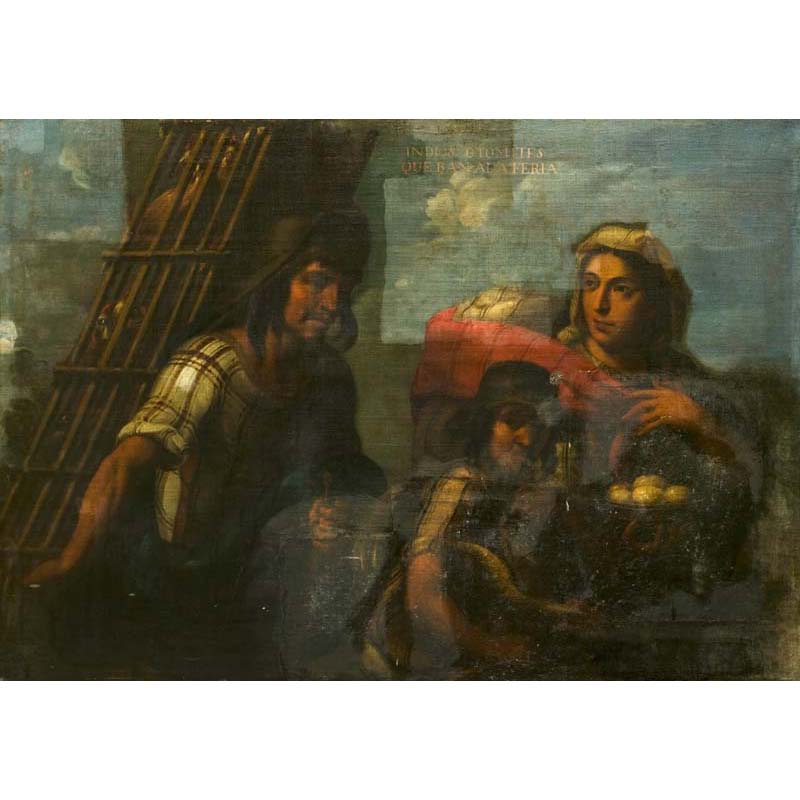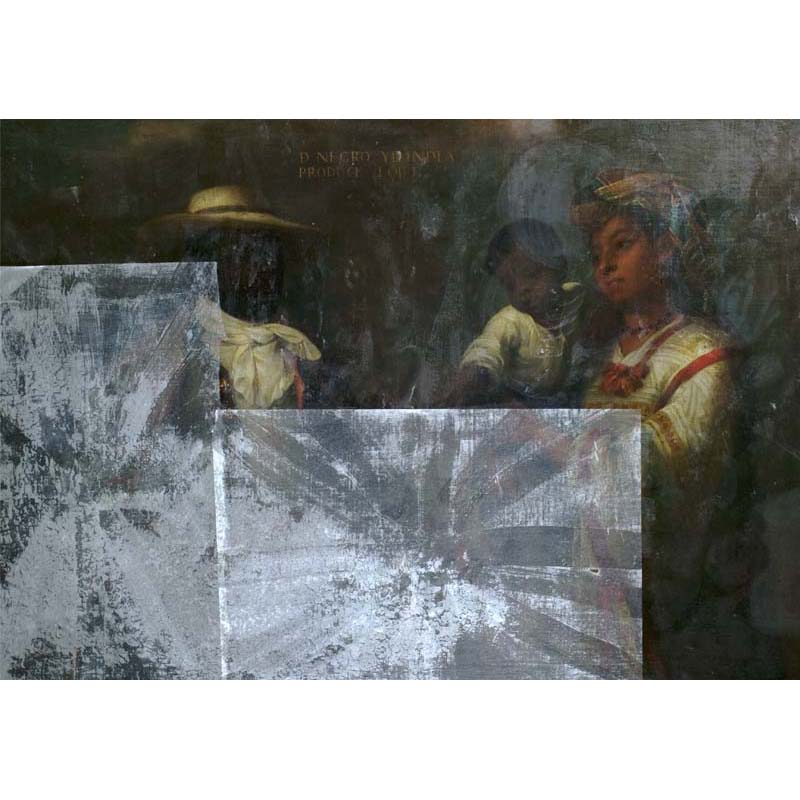About the Exhibition
In 2009 a set of five paintings were discovered in the art stores of Leicester Museum and Art Gallery, by a trainee curator. These paintings had been discarded after being used for restoration training and were in a very distressed state. This curator saw something fascinating within the paintings and decided to do some research to find out more about the paintings. She found that these were the first form of racial classification ever found. This curator was Tara Munroe, now the founder of Opal22 Arts and Edutainment. It has taken me over ten years to finally be able to tell the stories of these amazing paintings.
Opal22 has created a collection of events/experiences that will help you to understand the context of the paintings and how the colonial ideals around race and identity were created and the effects they have on today’s current society. Supported and funded by the National Lottery Heritage Fund, The paintings have gone through a complete restoration process and were showcased at Leicester Museum and Art Gallery in 2023. The whole process was developed into a documentary to benefit all in the future.

GET A BRIEF INSIGHT
The Casta Paintings are a clear notification showing that the ideals of racial prejudice were developed through Western society.
To understand the hypocrisy of the caste system or racial classifications is to understand the types of social systems that benefited from it, being capitalism and socialism. Moving forwards we have to observe the universal misconceptions of racism that have been formulated throughout the 19th, 20th and 21st centuries and created through our media and educational bodies that have been developed and is now defined as the Theory of Critical Race.
Description of the paintings
These paintings were developed in sets of sixteen and each hold images of families: a Mother, a Father, and a Child. Each painting also has a written description of the individual’s racial mix. Many of these descriptions often held zoology terms when relating to the mixed individual within the paintings.
Through the written descriptions of these paintings, they highlight the racial prejudices that have been developing from physical identification, showing that caste prejudices are preoccupied with cultural distinctions.
De Espanol y Negra produce Mulato
Translation: A Spaniard and a Black produce a Mule
This image included a white male in Military Uniform, we have found that with uniform would have been worn between the ages of 1760 and 1790 by a member of the Spanish Army.
The group of people is situated in what looks like a kitchen, the woman looks like she is grinding presumably chocolate in a pestle and mortar, with the child handing the male in the picture a cup of something on a plate with a cake or biscuit of some sort.
The women dress and headdress or thought is that of a maid, they have still been finely embroidered with patterns connected to the natives of the area. In the background, we see fine pottery also delicately to a high decorative standard.
On this image, there are some tell-tale signs about the painter or painters, as it would appear that different people may have painted different sections, just to the high quality of the males’ detail, compared to the way the female, Who some of her has been painted out of perspective and has a very poorly drawn hand.
De Negro y Indios se Produce un Lobo
Translation: A Black and a Indian make a Wolf
This image is the hardest to describe due to the amount of damage on this painting. The image includes a black male dress in what we believe to be a coachman’s outfit. The woman is holding a child in this image.
Her clothing although appearing to look westernised in style hold many cultural links to her beginnings. Her top is actually a huipil, the most common traditional garment worn by indigenous women from central Mexico. These Huipils would be woven with embroidery and ribbons, exactly as shown in the painting. This is an outfit that would have been kept for special occasions or for someone of high standing in society.
De Indios y Lobo se produce u grifio que es tente en el aire
Translation: An Indian and a Wolf make something you throw up into the air
In this painting, both the male and female seem to be in traditional dress, with both of them wearing the traditional Rebozo Shawls dyed red/orange using the Cochineal or cactus bug.
In this image, the child in the painting appears in western clothing, unlike the adults. The woman is wearing decorative jewellery which would mean she is of some wealth to standing.
Indios otomies queue ban a la feria
Translation: Native Indians going to the market
18TH CENTURY | OIL ON CANVAS
 Indians that had conformed to wearing western clothing and practised Catholicism were allowed to work in the main towns.
Indians that had conformed to wearing western clothing and practised Catholicism were allowed to work in the main towns.
This image includes a family dressed as farmers, they appear to be either going or coming from the market. They have chickens in a cage and eggs in a basket. All included within the painting seem to be poorly dressed. The child in the painting also appears to be in work mode and dressed similarly to the male in the paintings. The fabric used to clothe the male can be seen in the clothing of the female and the child in the painting.
Indios Barbaros
Translation: Indian Barbarians

18TH CENTURY | OIL ON CANVAS
Definition of Barbarian: Indians who refused to conform in clothing or religion.
This image shows a family in traditional native dress. In the image, they appear to be in a forest, and the father and son are both holding a bow and arrow.
This image would have been the last in the set, which would mean they were the lowest cast that could be documented.
PROJECT OVERVIEW
In 2009 a set of five paintings were discovered in the art stores of Leicester Museum and Art Gallery, by a trainee curator. These paintings had been discarded after being used for restoration training and were in a very distressed state. This curator saw something fascinating within the paintings and decided to do some research to find out more about the paintings. She found that these were the first form of racial classification ever found. This curator was me, Tara Munroe now the founder of Opal22 Arts and Edutainment. It has taken me over ten years to finally be able to tell the stories of these amazing paintings.
Opal22 will be creating a collection of events/experiences that will help you to understand the context of these paintings and how the colonial ideals around race and identity were created and the effects they have on today’s current society. The paintings will be going through a complete restoration process, so we can showcase them in a full exhibition to be shown at Leicester Museum and Art Gallery in 2023. The whole process will also be developed into a documentary to benefit all in the future.
To do this we still need to create extra funding and we are asking all of you to help us to do that
Events
FREQUENTLY ASKED QUESTIONS
Looking for more information on what we do? If so, we’ve put together a list of our most commonly asked questions to give you a better understanding of how we work. Read on to find out more information. And if you have any other questions not answered here, feel free to get in touch with our team.
The exact date of when the Casta paintings were created is unknown, but experts can trace their origin back to the 18th century.
All the Casta paintings have been traced back to the late 18th century Mexico.
Although we cannot be certain of the artist, experts suspect that they look like they could have been painted by Juan Rodríguez Juárez.



















